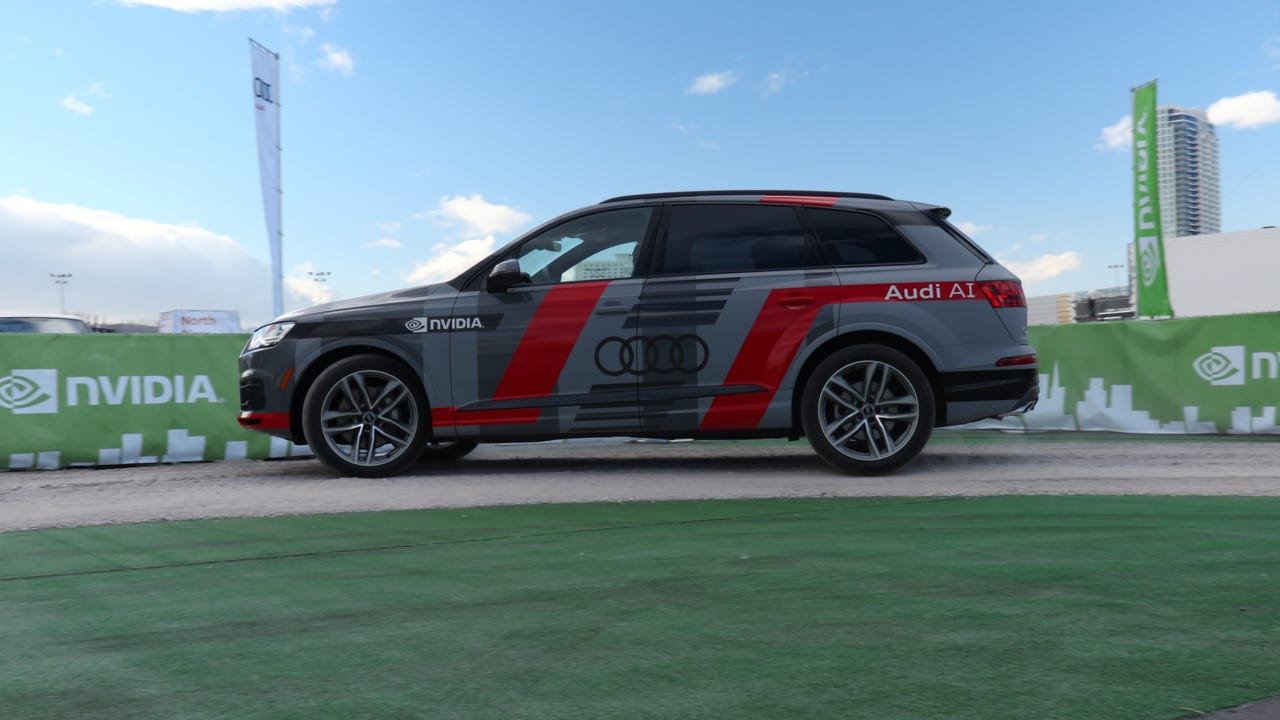Nvidia to build AI car with Audi, launch GeForce-as-a-service


An Audi Q7 driverless concept car.
Nvidia has announced signing a number of partners to bring its AI car platform to the streets, the largest of which is a partnership with Audi to build AI cars that will hit the road by 2020.
"We're talking a highly automated vehicle, in numerous situations, by 2020 this will be in production," president of Audi America Scott Keogh said at the Consumer Electronics Show (CES) on Wednesday.
"Level 4 autonomy, so this is huge."
CES 2017
According to the US Department of Transportation's National Highway Traffic Safety Administration (NHTSA) autonomous driving levels, level 4 vehicles are deemed as highly autonomous.
"At SAE Level 4, an automated system can conduct the driving task and monitor the driving environment, and the human need not take back control, but the automated system can operate only in certain environments and under certain conditions," NHTSA's automated vehicles policy states.
The work between Audi and Nvidia will initially use the chip makers' Drive PX 2 platform, which uses either one or two Pascal GPUs with an equivalent number of system-on-a-chip (SoC) containing four ARM Cortex-A57 CPUs and two of Nvidia's custom 64-bit Denver ARM CPU cores.
Nvidia CEO Jen-Hsun Huang on Wednesday described the platform as "30 teraops in 30 watts".
The company also announced that it is working with German automotive supplier ZF on the ProAI self-driving system based on the single SoC and GPU configuration of the Drive PX 2. The system is touted as taking input from cameras, lidar, radar, and ultrasonic sensors to allow for self-driving cars, trucks, and forklifts to navigate their surroundings, as well as enable vehicles to share information. It is scheduled to be in production from 2018.
On the mapping front, Huang announced that Nvidia has teamed up with Here, Baidu, TomTom, and Zenrin.
"The physical world is changing all the time, and self-driving cars need to be aware of that change so they can take better driving decisions," Edzard Overbeek, chief executive officer of Here, said in a statement. "Here HD Live Map already addresses that need, and by working with Nvidia, we can ensure that automakers deploying the Nvidia Drive platform can easily enable Here HD Live Map for self-driving cars."
In the past week, Here has received buy-ins from Intel, Tencent, NavInfo, and Singapore state-owned investment firm GIC.
GeForce-as-a-service
Huang also announced the GeForce Now service, which will allow Windows and Mac users to have a cloud-based PC with a GeForce 1080 or 1060 graphics card for gaming. Users will be able to install games from distribution platforms such as Steam, Battle.net, Origin, Uplay, and GOG, as well as directly installing others.
The service will launch first in the continental United States, with early access to open in March, and commercial service set to begin in "the spring".
Players will be charged $25 for 10 hours of play on a 1080 machine, or 20 hours on a 1060 card.
"There are more than 200 million GeForce gamers around the world today, yet hundreds of millions of others have computers that aren't well suited for modern video games," Huang said. "With GeForce Now, a new generation of gamers can now play the latest PC games with great performance and amazing quality."